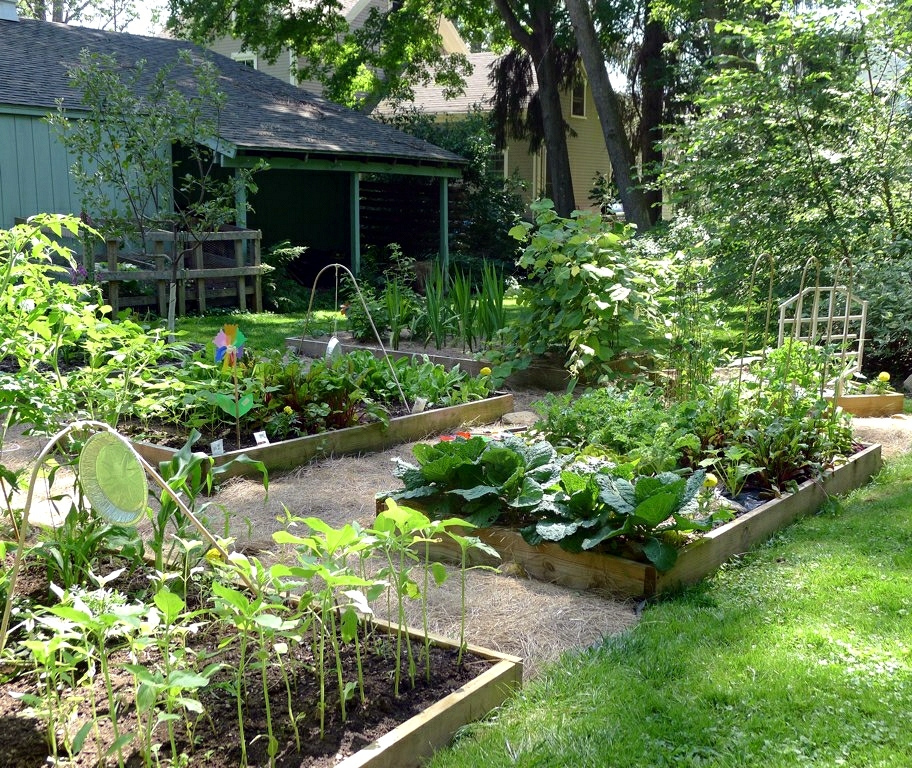Vegetable Gardening In North Carolina
by Charlotte Glen, Horticulture Agent – Pender County Cooperative Extension

With a little planning, you can harvest fresh vegetables from your own backyard most of the year. Vegetables can be grown outside in most parts of the Carolinas from late winter through late fall. If you are willing to invest in a low-cost cold frame or unheated tunnel house, harvesting through the winter is easily possible. The key to growing a productive vegetable garden in all seasons is in knowing what to plant and when.
Knowing when to plant different crops allows gardeners to develop a planting calendar for year-round harvest. Since planting dates vary across the state, check with your local Cooperative Extension office to find out recommended dates for your location. Use the following guidelines to plan your vegetable garden.
January – March
January is a great month for ordering seeds and getting organized for the year to come.
February, believe it or not, is the month to start planting hardy crops outside in the Piedmont and coast. Potatoes and garden peas, along with snow peas and sugar snaps, should be planted in the ground around mid-February (mid-March in the mountains). Carrots, parsnip, lettuce, spinach, mustard, rutabaga, radish, and turnip seed can be sown directly into the garden from mid-February to early April. Transplants of onions, broccoli, cabbage, kale, and collards can be set out during this time as well. If you want to start your own transplants of these crops, sow them in an unheated cold frame in January and February.
March is the time to start seeds of eggplants, peppers, and tomatoes indoors to have transplants ready for spring.
"The key to growing a productive vegetable garden in all seasons is in knowing what to plant and when."
April – June
It is safe to plant warm-season crops like cucumbers, tomatoes, southern peas, and lima beans outside after the last average frost date, which averages from late March on the coast to the end of April or later in the mountains.
A few warm-season crops will tolerate very light frost and can be started a little earlier. These include green beans, sweet corn, squash, and zucchini, which can be sown in the garden a few weeks before the last expected frost.
Other warm-season crops are frost-sensitive and should not be planted outside until all threat of frost is past. These include melons and okra, which can be set out as transplants or sown directly, peppers, eggplants, and sweet potatoes, which are set as transplants, and peanuts, which are seeded directly into the garden.
July – September
By late summer, heat, drought, and pests have reduced yields on many crops. But take heart, this is the time to start crops for the fall garden. Sow green beans, carrots, beets, Swiss chard, kohlrabi, leeks, rutabaga, parsnip, turnips, squash, zucchini, and cucumbers directly into the garden at least eight weeks before your first expected fall frost, which can be in early October in the mountains and as late as early November at the coast. Tomato transplants for a fall crop can also be planted.
Start broccoli, cauliflower, kale, collard, cabbage, lettuce, and spinach seeds in late summer and transplant into the garden in early fall, or purchase transplants from a garden center. Spinach and lettuce can also be sown directly into the garden in early fall.
October – December
October is the time to plant garlic from cloves and onion from seeds directly into the garden (September in the mountains and western Piedmont). Both crops will grow through winter and be ready to harvest in late spring.
Late summer planted cucumbers, squash, and tomatoes, as well as any peppers and eggplant that are still hanging on will continue to produce until frost.
Hardy crops like cabbage, collards, and kale will usually continue to produce through December. The growing season for less hardy crops like broccoli and lettuce can be extended by covering them with cold frames or growing them in an unheated tunnel house.
Learn More
- NC Cooperative Extension Urban Horticulture Website:
- Clemson Cooperative Extension Home and Garden Info. Center
Did you find this story interesting? These articles are made possible through the generous support of our members. Join the Carolina Farm Stewardship Association today!

Vegetable Gardening In North Carolina
Source: https://www.carolinafarmstewards.org/the-gardeners-calendar-plan-now-for-a-year-round-harvest/
Posted by: miercirmly1939.blogspot.com

0 Response to "Vegetable Gardening In North Carolina"
Post a Comment